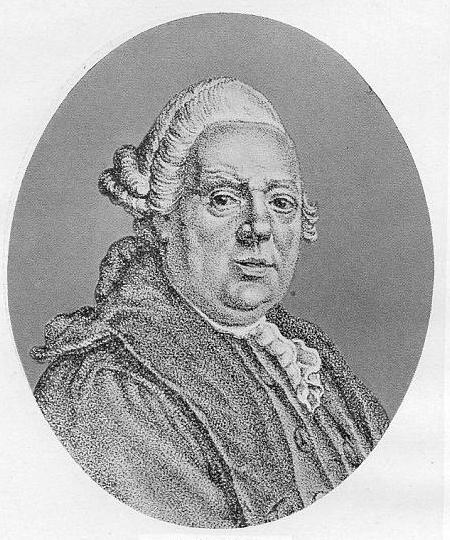|
Nundinae
The nundinae (, ), sometimes anglicized to nundines,. were the market days of the ancient Roman calendar, forming a kind of weekend including, for a certain period, rest from work for the ruling class ( patricians). The nundinal cycle, market week, or eight-day week (. or ') was the cycle of days preceding and including each nundinae. These were marked on fasti using from A to H. The earliest form of the Roman calendar is sometimes said to have included exactly 38 such cycles, running for 304 days from March to December before an unorganized expanse of about 50 winter days. The lengths of the Republican and Julian calendars, however, were not evenly divisible by 8; under these systems, the nundinae fell on a different letter each year. These letters formed the basis of the later Christian dominical letters. Name The name ' () was apparently formed from an early form of ' ("ninth") and ' ("day"), a root related to ' and ultimately the Proto-Indo-European root reconstructe ... [...More Info...] [...Related Items...] OR: [Wikipedia] [Google] [Baidu] |
Roman Calendar
The Roman calendar was the calendar used by the Roman Kingdom and Roman Republic. Although the term is primarily used for Rome's pre-Julian calendars, it is often used inclusively of the Julian calendar established by Julius Caesar in 46 BC. According to most Roman accounts, #Romulus, their original calendar was established by their Roman legend, legendary list of kings of Rome, first king Romulus. It consisted of ten months, beginning in spring with March and leaving winter as an unassigned span of days before the next year. These months each had 30 or 31 days and ran for 38 nundinal cycles, each forming a kind of eight-day weeknine days inclusive counting, counted inclusively in the Roman mannerand ending with religious rituals and a Roman commerce, public market. This fixed calendar bore traces of its origin as an observational calendar, observational lunar calendar, lunar one. In particular, the most important days of each monthits kalends, nones (calendar), nones, a ... [...More Info...] [...Related Items...] OR: [Wikipedia] [Google] [Baidu] |
Dominical Letters
Dominical letters or Sunday letters are a method used to determine the day of the week for particular dates. When using this method, each year is assigned a letter (or pair of letters for leap years) depending on which day of the week the year starts with. The Dominical letter for the current year 2025 is E. Dominical letters are derived from the Roman practice of marking the repeating sequence of eight letters A–H (commencing with A on January 1) on stone calendars to indicate each day's position in the eight-day market week (''nundinae''). The word is derived from the number nine due to their practice of inclusive counting. After the introduction of Christianity a similar sequence of seven letters A–G was added alongside, again commencing with January 1. The dominical letter marks the Sundays. Nowadays they are used primarily as part of the computus, which is the method of calculating the date of Easter. A common year is assigned a single dominical letter, indicating which ... [...More Info...] [...Related Items...] OR: [Wikipedia] [Google] [Baidu] |
List Of Roman Birth And Childhood Deities
In ancient Roman religion, birth and childhood deities were thought to care for every aspect of conception, pregnancy, childbirth, and child development. Some major deities of Roman religion had a specialized function they contributed to this sphere of human life, while other deities are known only by the name with which they were invoked to promote or avert a particular action. Several of these slight "divinities of the moment" are mentioned in surviving texts only by Christian polemicists. An extensive Greek and Latin medical literature covered obstetrics and infant care, and the 2nd century Greek gynecologist Soranus of Ephesus advised midwives not to be superstitious. But childbirth in antiquity remained a life-threatening experience for both the woman and her newborn, with infant mortality as high as 30 or 40 percent. Rites of passage pertaining to birth and death had several parallel aspects. Maternal death was common: one of the most famous was Julia, daughter of Juli ... [...More Info...] [...Related Items...] OR: [Wikipedia] [Google] [Baidu] |
Adjective
An adjective (abbreviations, abbreviated ) is a word that describes or defines a noun or noun phrase. Its semantic role is to change information given by the noun. Traditionally, adjectives are considered one of the main part of speech, parts of speech of the English language, although historically they were classed together with Noun, nouns. Nowadays, certain words that usually had been classified as adjectives, including ''the'', ''this'', ''my'', etc., typically are classed separately, as Determiner (class), determiners. Examples: * That's a ''funny'' idea. (Prepositive attributive) * That idea is ''funny''. (Predicate (grammar), Predicative) * * The ''good'', the ''bad'', and the ''funny''. (Substantive adjective, Substantive) * Clara Oswald, completely ''fictional'', died three times. (Apposition, Appositive) Etymology ''Adjective'' comes from Latin ', a calque of (whence also English ''epithet''). In the grammatical tradition of Latin and Greek, because adjectives were I ... [...More Info...] [...Related Items...] OR: [Wikipedia] [Google] [Baidu] |
Inclusive Counting
Counting is the process of determining the number of elements of a finite set of objects; that is, determining the size of a set. The traditional way of counting consists of continually increasing a (mental or spoken) counter by a unit for every element of the set, in some order, while marking (or displacing) those elements to avoid visiting the same element more than once, until no unmarked elements are left; if the counter was set to one after the first object, the value after visiting the final object gives the desired number of elements. The related term ''enumeration'' refers to uniquely identifying the elements of a finite (combinatorial) set or infinite set by assigning a number to each element. Counting sometimes involves numbers other than one; for example, when counting money, counting out change, "counting by twos" (2, 4, 6, 8, 10, 12, ...), or "counting by fives" (5, 10, 15, 20, 25, ...). There is archaeological evidence suggesting that humans have been c ... [...More Info...] [...Related Items...] OR: [Wikipedia] [Google] [Baidu] |
Inscription
Epigraphy () is the study of inscriptions, or epigraphs, as writing; it is the science of identifying graphemes, clarifying their meanings, classifying their uses according to dates and cultural contexts, and drawing conclusions about the writing and the writers. Specifically excluded from epigraphy are the historical significance of an epigraph as a document and the artistic value of a literature, literary composition. A person using the methods of epigraphy is called an ''epigrapher'' or ''epigraphist''. For example, the Behistun inscription is an official document of the Achaemenid Empire engraved on native rock at a location in Iran. Epigraphists are responsible for reconstructing, translating, and dating the trilingual inscription and finding any relevant circumstances. It is the work of historians, however, to determine and interpret the events recorded by the inscription as document. Often, epigraphy and history are competences practised by the same person. Epigraphy is ... [...More Info...] [...Related Items...] OR: [Wikipedia] [Google] [Baidu] |
Middle French
Middle French () is a historical division of the French language that covers the period from the mid-14th to the early 17th centuries. It is a period of transition during which: * the French language became clearly distinguished from the other competing Oïl languages, which are sometimes subsumed within the concept of Old French () * the French language was imposed as the official language of the Kingdom of France in place of Latin and other Oïl and Occitan languages * the literary development of French prepared the vocabulary and grammar for the Classical French () spoken in the 17th and 18th centuries. It is the first version of French that is largely mutual intelligibility, intelligible to Modern French, contrary to Old French. History The most important change found in Middle French is the complete disappearance of the noun declension system, which had been underway for centuries. There was no longer a distinction between nominative and oblique case, oblique forms of nou ... [...More Info...] [...Related Items...] OR: [Wikipedia] [Google] [Baidu] |
Classical Latin
Classical Latin is the form of Literary Latin recognized as a Literary language, literary standard language, standard by writers of the late Roman Republic and early Roman Empire. It formed parallel to Vulgar Latin around 75 BC out of Old Latin, and developed by the 3rd century AD into Late Latin. In some later periods, the former was regarded as good or proper Latin; the latter as debased, degenerate, or corrupted. The word ''Latin'' is now understood by default to mean "Classical Latin"; for example, modern Latin textbooks almost exclusively teach Classical Latin. Cicero and his contemporaries of the late republic referred to the Latin language, in contrast to other languages such as Greek, as or . They distinguished the common vernacular, however, as Vulgar Latin (''sermo vulgaris'' and ''sermo vulgi''), in contrast to the higher register (sociolinguistics), register that they called , sometimes translated as "Latinity". ''Latinitas'' was also called ("speech of the good fa ... [...More Info...] [...Related Items...] OR: [Wikipedia] [Google] [Baidu] |
Pluralia Tantum
A ; ) is a noun that appears only in the plural form and does not have a singular variant for referring to a single object. In a less strict usage of the term, it can also refer to nouns whose singular form is rarely used. In English, are often words that denote objects that occur or function as pairs or sets, such as spectacles, trousers, pants, scissors, clothes, or genitals. Other examples are for collections that, like alms, cannot conceivably be singular. Other examples include suds, jeans, outskirts, odds, riches, goods, news, gallows (although later treated as singular), surroundings, thanks, and heroics. In some languages, refer to points or periods of time (for example, Latin 'calends, the first day of the month', German 'vacation, holiday'), or to events (for example, Finnish 'wedding'), or to liquids (for example, Hebrew () and Chichewa , both 'water'). A bilingual example is the Latin word that was brought into English; when referring to the symbol of aut ... [...More Info...] [...Related Items...] OR: [Wikipedia] [Google] [Baidu] |
Julius Modestus
The gens Julia was one of the most prominent patrician families of ancient Rome. From the early decades of the Republic, members of this gens served in the highest offices of the Roman state, beginning with Gaius Julius Iulus, consul in 489 BC. However, the Julii are perhaps best known for Gaius Julius Caesar, the dictator and adoptive father of the emperor Augustus, through whom the name was passed to the Julio-Claudian dynasty of the first century AD. The Julius became very common in imperial times, as the descendants of persons enrolled as citizens under the early emperors began to make their mark in history.Drumann, ''Geschichte Roms'', vol. III, pp. 114–117; Smith, "Julia Gens", in ''Dictionary of Greek and Roman Biography and Mythology'', vol. II, pp. 642, 643; Münzer, "Iulius", in ''Realencyclopädie der Classischen Altertumswissenschaft'', vol. X, half-volume 19, cols. 106, 107. Origin According to Roman tradition, the Julii were among the Alban families bro ... [...More Info...] [...Related Items...] OR: [Wikipedia] [Google] [Baidu] |
Augur
An augur was a priest and official in the ancient Rome, classical Roman world. His main role was the practice of augury, the interpretation of the will of the List of Roman deities, gods by studying events he observed within a predetermined sacred space (''templum''). The ''templum'' corresponded to the heavenly space above. The augur's decisions were based on what he personally saw or heard from within the ''templum''; they included thunder, lightning and any accidental signs such as falling objects, but in particular, birdsigns; whether the birds he saw flew in groups or alone, what noises they made as they flew, the direction of flight, what kind of birds they were, how many there were, or how they fed. This practice was known as "''taking the auspices''". As circumstance did not always favour the convenient appearance of wild birds or weather phenomena, domesticated chickens kept for the purpose were sometimes released into the templum, where their behaviour, particularly h ... [...More Info...] [...Related Items...] OR: [Wikipedia] [Google] [Baidu] |







